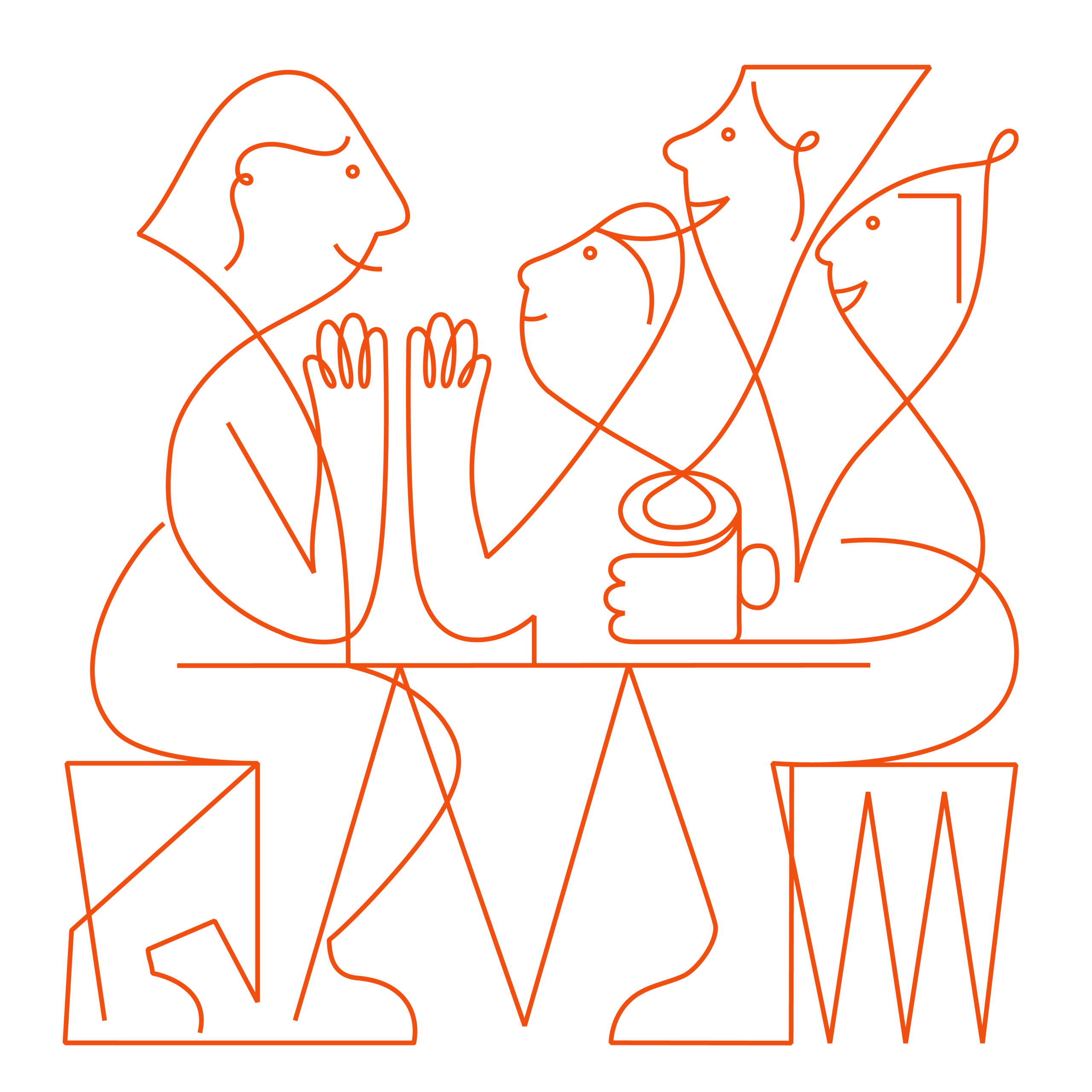At the In-House Agency Leaders Club’s recent one-day summit, we sat down with Jones Knowles Ritchie ECD Sean Thomas to talk collaboration, brand guidelines and why the growth of in-house is “the biggest shift I’ve ever seen in this industry”
IHALC: At JKR, you work a lot with in-house marketing and design teams and with in-house agencies. Just give us an overview of how you’ve seen that world changing in the last few years.
Sean Thomas: I think it’s the biggest shift I’ve ever seen in this industry. It always used to feel that if you were like a big entertainment platform, or you had a product or a service, you might have your own in-house team because of how fast things developed. But historically, in our world of of FMCG and big brands, they didn’t really have much of an in-house design function. And now everyone is starting to have much, much more of that. And it’s been incredible to see the change, I think, in terms of the calibre of people that are working client-side and brand-side.
Also, we’ve always had a real barrier to explain to a lot of our clients what design is or what brand is, it’s quite hard to codify. You can see an instant return on advertising but you can’t always see an instant return on design. It’s really hard to get data on. So there’s been enormous benefit, I think, to our industry, in having so many people working in-house that can really help people understand why it’s important.
Lastly, historically we’ve always worked with a marketing team. But I think the last four pitches I’ve done, or the last four bits of new business I’ve worked on, the project began with working with the in-house design team, which is a massive shift in the last two years. So the briefs are much more peer-to-peer and the work is much more peer-to-peer, which is really interesting.
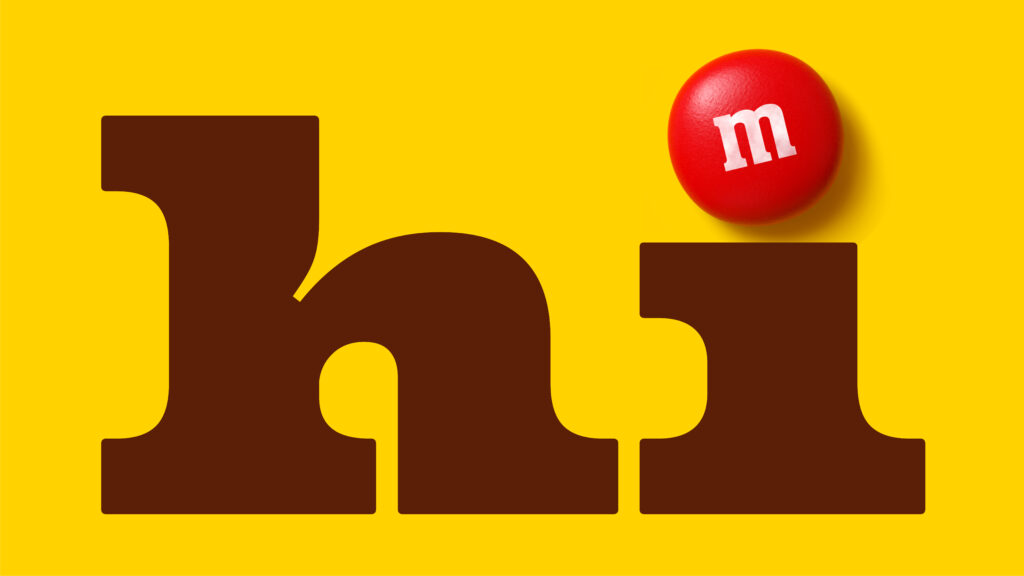
From JKR’s recent M&Ms rebrand
IHALC: When you are working with a marketing team but also an in-house design team, do you find yourselves getting caught in the middle? Does that get tricky to navigate?
ST: That’s the hardest bit. Sometimes you’re never quite sure if the internal design team have been given true permission to succeed. There’s some businesses that are arming those departments with money and resources and briefs and time. And there’s other people that are kind of saying they are but they’re not. And then what happens is they come around the back of us and say, ‘Look, can you just do what we want you to always do, and ignore the advice of the in-house design team?’. But then we’re trying to foster a relationship with the in-house design team and get to something good, that’s going to work.
We’ve had tricky situations in the last couple of years where we have a marketing lead and an in-house design lead and it normally ends up with us being caught in the middle and unable to satisfy both.
IHALC: Has there been a shift in terms of who wants to own the brand strategy now?
ST: We have a lot of clients that come to us and they already have the strategy in place. And we work with it. The National Lottery was one where there had been three years of strategy work and the first thing they said was please don’t throw this out, don’t do the agency thing of just going, sure that’s great, but then just ignore it all. So we worked with it. And there was so much good stuff in there, it was just about finding the five or six things that were relevant to the job we had to do.
So we often work with what’s there. But then sometimes you are brought in to give an outside perspective, because if that team has been on the brand for a long while, they might need fresh eyes on this. A lot of the time it’s just about building on what’s already working. I think as an agency, our belief is always build on what’s already there, rather than throw it all out.
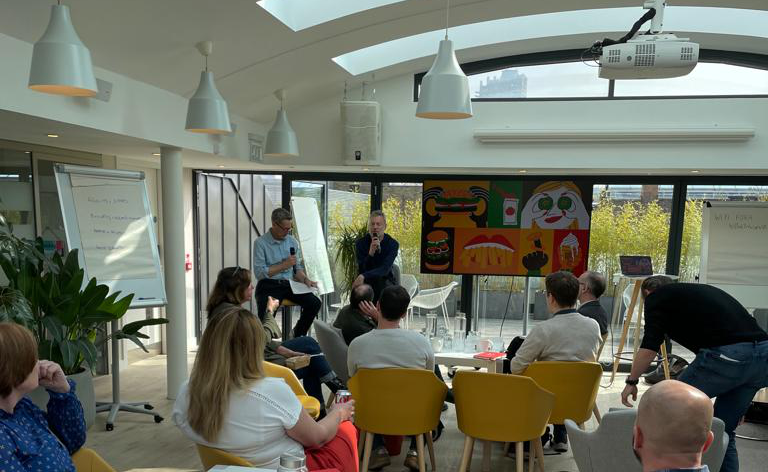
IHALC’s Patrick Burgoyne (l) interviews Sean Thomas at our recent one-day summit
IHALC: You’ve worked on a lot of legacy brands and in many cases you’ve taken an approach of looking into the archives and preserving or resurrecting some key elements of the brand rather than starting anew.
ST: We all want to be doing creative things and we all want to be having new things to shout about. And we all get bored quite quickly. But the reality is that we live and breathe these brands every day of our life, but the public don’t, they’re probably going to engage with these brands like a few times a year, very briefly, for a few seconds. And so if you’re only going to really catch that person’s imagination or attention for a few seconds every year, you really want to make sure that you’re almost saying the same thing repeatedly. Once you’ve got your foundations there and it’s working for you, just find new ways every year to keep it fresh and update it. I think a lot of creative agencies want to throw everything out. They want to be the people that did the Airbnb logo, where you get rid of everything. And sometimes that works in that case, but you can’t throw out the Heinz Keystone or you can’t throw out the Amazon smile. You’d be mad to do that. So it’s just about finding new ways to make that exciting time after time.
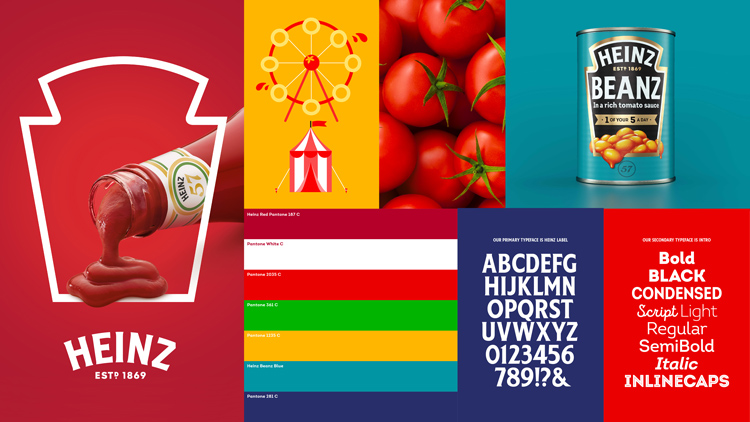
Heinz Masterbrand refresh by JKR
IHALC: In terms of the problems you’re asked to solve, how are they changing?
ST: The biggest opportunity for us at the moment is probably the gradual decline of traditional advertising. Because we began as a packaging agency that found a way to capture the essence of a brand on a static label on a very small canvas, that skill can translate to social media and Instagram, it can translate to Twitter. We’re very good at telling stories in a very, very quick way.
IHALC: What are the conditions that make for a successful collaborative relationship, whether it’s with a marketing partner, a design department or IHA?
ST: With the truly, great pieces of work that everyone talks about from our agency – Burger King, Heinz, Dunkin, Budweiser – what all of those had was a client with an absolute clear vision, and they weren’t going to put up with any shit. And they were brilliant. They all were all over any content that came out that first year. If it veered away from the brand guidelines, it was ‘go and do it again. Go and do it again. Go do it again’. And they they hammered that home. So the secret was having a client that signed up to a vision, communicated it internally, got approval from everyone within the business, and then was like, we are going for it. The success of a lot of those jobs are all because of a client who knew what they wanted. And then they were all over the detail as well.
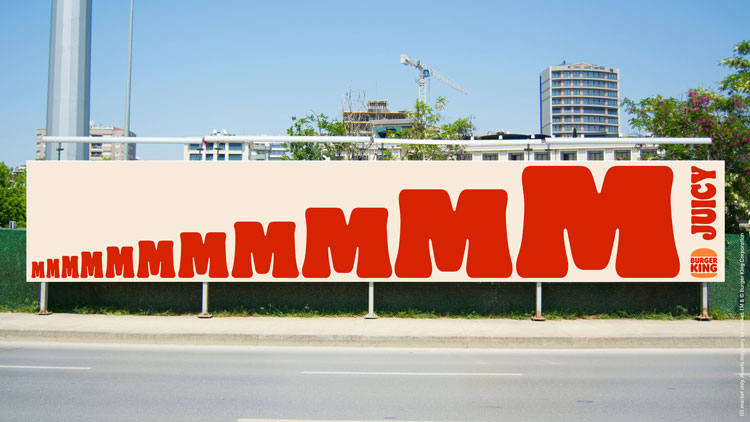
From JKR’s Burger King identity
IHALC: You mentioned brand guidelines, how is the role of brand guidelines changing?
ST: I think it’s changing very fast. My feeling is that this is going to be what makes and breaks the relationship between in-house and agencies and the standard of work that is produced over the next 10 years. If your company can figure out how to do this well, I think that you will be light years ahead of everyone else because this is very, very hard. Whenever you start using brand guidelines, it doesn’t matter how many variations you’ve got, it doesn’t matter how many permutations you plan for, I guarantee, the one that you need that day won’t fit.
We’ve had incredible success sometimes by actually restricting the elements we’ve said people can use. And we’ve said, ‘if you stick to colour, typography, these templates, then everyone your business can use it’. When you want to bring in photography, styling, then we recommend that’s more of a job for these departments, within your business and in collaboration with us. And then maybe when you’re getting into like bespoke illustrations or something like that, that should be the job of the ad agency, or maybe a partner, if it’s got particularly complex.
We’ve done training with in-house and we do governance. With high-profile projects, there’s a monthly meeting where people put early designs in front of us and they just ask for honest advice like do you think this feels like it fits the brand new guidelines? Is there anything you’d change?
IHALC: How long do you have to continue that governance role when a new identity goes out into the world?
ST: The plan is always the first few months. And normally what you find is it takes a couple of years before people have got the hang of it all. I’m not really a believer in what we put out is the final output – there’s never been a brand identity that’s come out that looks the same now as it did when it launched. People will evolve things, people will get bored with things, people will move it on. What we do is we try and get the house in order. But then you want people to use it and have fun with it.
And then I think we’ve evolved our guidelines a lot. We’ve got these brand portals now where any live assets are always updated. We’ve moved away from PDFs and downloadable icons and things like that. All of the assets are live, which stops bad logos and bad things getting into systems. It takes a bit longer to build it and it takes a bit more maintenance and governance, but what you don’t want is to end up with thousands of people around the world with their own versions of weird logos out there. These things take a bit more time upfront to get right but it does pay back eventually.
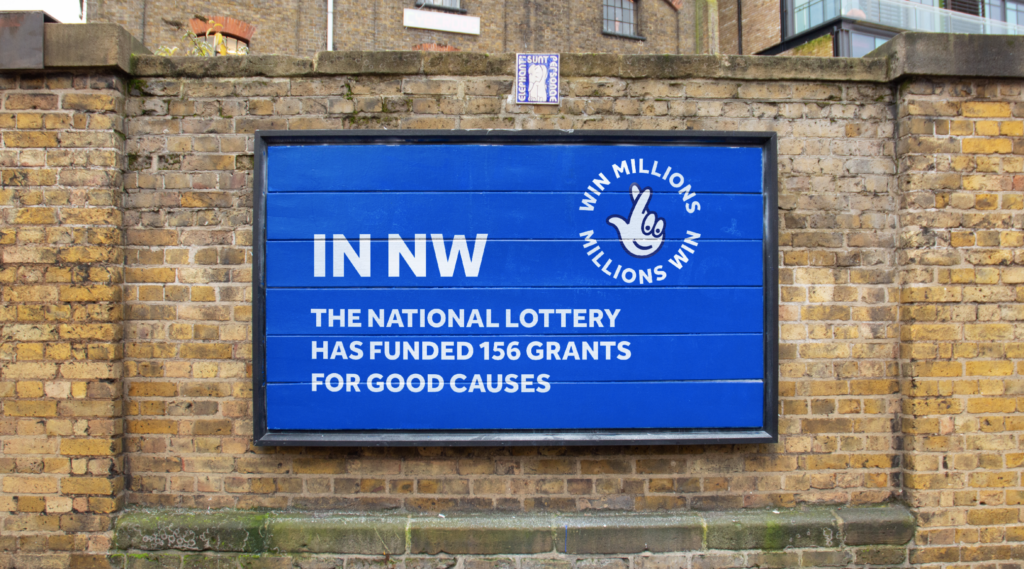
JKR for The National Lottery
IHALC: When you’re looking at the implementation of a scheme, how much influence can you have in saying, ‘look, it’s going be a waste of money if you don’t invest to implement this properly?’ How can you ensure that something fulfils its potential?
ST: In the last few years we’ve really focused on three or four primary assets that can really make a difference, which are often colour, the crop in the photography of products, and typography. I think typography can play a massive role. That’s another massive shift. Whereas it used to be really hard to convince a client to have a bespoke typeface, suddenly now we’ve managed to convince people that actually, it’s such a cheap investment, because you’re paying companies so much money for licensing of typography and fonts every year across all of your businesses. Whereas if you just cut your own typeface really well, once, and put it on all your computers, you own it, and you’ll save loads of money. It’s a fast and really easy way that you can create your own language and you can do a lot with very few things.
We often start with a restriction as well. When we worked on the National Lottery one of the first mandates was ‘can you not change the typeface? Because we’ve got this on every computer and it’s embedded in all of our systems, it would be incredibly complicated to rip this out and alter it’. So we said okay, it just needed to be typeset a bit better and played around with a bit more. A lot of my favourite projects are when you know a limitation and you can push against it. I actually hate a blank sheet of paper brief – it’s my least favourite thing on the planet.
IHALC: When you are conceiving a creative ideas, what approach do you take to ensure that those ideas can work both across multiple executions, but also multiple channels?
ST: At the pitch stage of the lottery we did our own, basic consumer journey of how you engage with the brand. We mapped out the experience of someone going online to buy a ticket and someone seeing the brand, randomly online and then someone actually going into a store. And what we realised was that there were moments in the journey where it all kind of fell apart and where there was a real drop off. It didn’t look very joyful, or at the moment where you wanted it to go really big, nothing happened, you’ve just got an email. And we just said, if you target these three moments in the overall experience, and just make those really good, that will make a massive difference.
Stella Artois came to us and said they didn’t have the money to make the chalice glass, which is now used in all the advertising. And we said to them, but you have the money to make key rings, drip trays, plastic bags and all of this stuff. If you just took away those 15 projects that end up in landfill and invested in one thing that could make a real difference for your business, that would be a good investment.
So we try and look at the whole journey of the brand and figure out what the moments are that can actually make a real difference. Too many people think you have to do it all – the reality is you have to do two or three things really well.
IHALC: Do you think companies have got a good feel as to when to use an external agency and when to use in-house?
ST: Every case is so different. One of the first things we do at the start of a project is an exercise we call Design the Alliance. We work with the in-house team to figure out what you want to do and what you want us to do so that we are clear on that straightaway. It’s really important to know what role you’re both going to play.
Sean Thomas was talking to IHALC’s Patrick Burgoyne at our one-day In-House Advantage summit, held on March 30 in London. Our Events page has listings of all upcoming events. Or sign up for our newsletter to keep up to date
